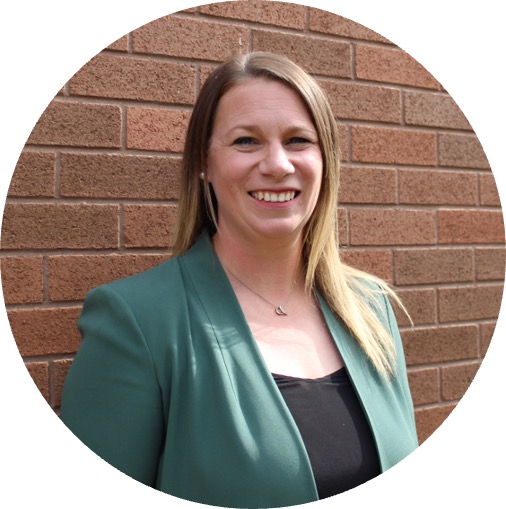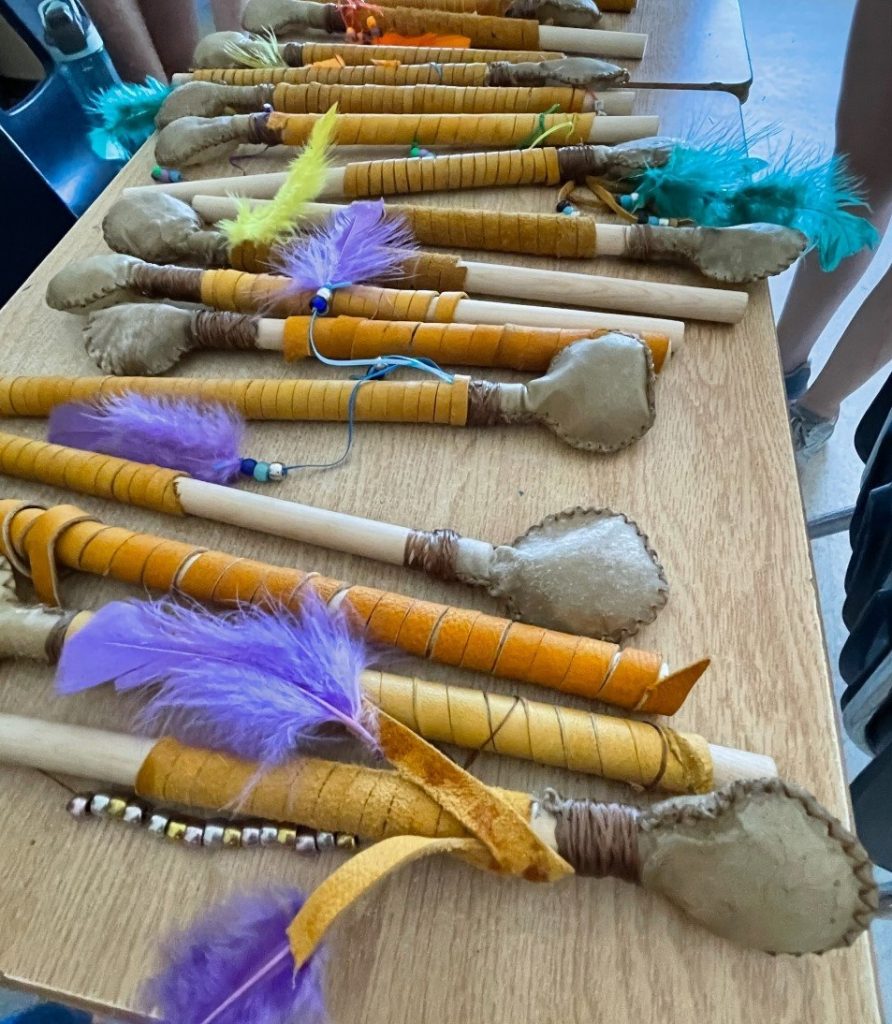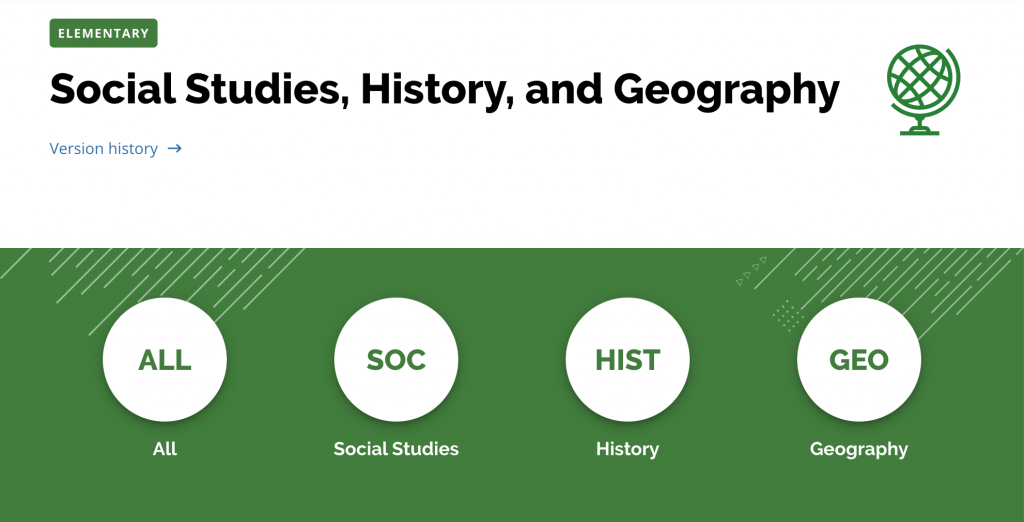Anna Pearson,
Elementary Social Studies Teacher
Anna Pearson is an elementary social studies teacher with 15 years of teaching experience. She currently teaches Grade 5 and 6 students at a public dual track school that offers both French immersion and an English program in North Bay, Ontario. The school’s student population is predominantly white and of European descent, but it also serves Indigenous students, including those from fly-in communities.

Sunset Park Public School
North Bay, Ontario

Teaching & Learning
Anna reflected on how her personal experiences and identity have shaped her approach to teaching. Drawing from her own education, she aims to make history engaging and relevant for her students.
Anna was a history major in university, and she recalled the passive, rote learning methods she experienced as a student. “When most teachers think of their experiences learning history, or learning social studies, you’re colouring a map of Canada, you’re trying to fit Saskatchewan in the middle, you’re trying to color all the little islands at the top,” she said.
Recognizing the limitations of this approach, Anna strives to make history more engaging for her students. “I strongly believe in using active learning with my students,” she said, emphasizing the use of primary sources, thinking concepts, and artifacts to bring history to life.
Anna also emphasizes lifelong learning for her students and the importance of sharing her own ongoing educational journey.
“My students see that I’m a student,” she noted, describing how her students engage with her educational pursuits. Through her teaching, Anna aims to provide students with multiple perspectives and engaging learning experiences she feels were missing from her own education. Her approach reflects a commitment to making history relevant and exciting for young learners.

Indigenous Knowledge
Anna shared how the nearby Nipissing First Nation is a valuable resource for her teaching. As she stated, “we are really lucky, where we live in North Bay, that we have Nipissing First Nation, which is not far from here on the outskirts of North Bay.” This proximity allows for collaboration with Indigenous educators who provide resources and share Indigenous ways of knowing.
Anna has noticed a shift in her school board’s approach to bringing Indigenous knowledges into the classroom. As she explained, “we used to have character education, but we’ve moved towards using the grandfather teachings in schools.” She emphasized the importance of authentic Indigenous voices in her teaching, remarking “I cannot appropriate the experience of an Indigenous person. Through that I use Indigenous voices; we have guest speakers come in.” These speakers include elders, the school board’s Indigenous coordinator, and even former Indigenous students.
Anna also focuses on making land acknowledgments meaningful. “Taking it out of just reciting it in the morning, another thing in the announcements and then boom, done. Instead, really taking time to think about it and what it means.”
Curriculum & Resources
When teaching social studies and history, Anna emphasizes following the Ontario curriculum by applying a social justice lens, using inquiry-based learning to engage students’ interests, connecting historical topics to current events, and encouraging awareness of world events through news and media literacy.
Anna discussed the strengths and challenges of teaching history in a split-grade classroom. She appreciates the freedom the curriculum offers, especially for those passionate about history. “We do have freedom as teachers, and teachers who have a passion for teaching history really like that,” she said.
However, a significant challenge arises from the curriculum’s structure in split-grade classrooms. “When you’re teaching a split grade, it’s really difficult to teach social studies,” she explained. As Anna described, the split classroom makes it challenging to create combined units without shortchanging one grade level. “If I do a combined unit, I feel that I just scratch the surface with both the grade 5 and grade 6 curriculum rather than taking the time to dig into and inquire about the big ideas from each grade’s curricular strand.”
Anna also pointed out the lack of resources for split-grade teaching. As she put it, “there are no resources to teach split grades. So, that’s a problem in terms of resources. And then you see teachers relying on Teachers Pay Teachers, as opposed to things that could be produced by the government for teachers.”
Co-created by Anna Pearson and Christine Cheng

